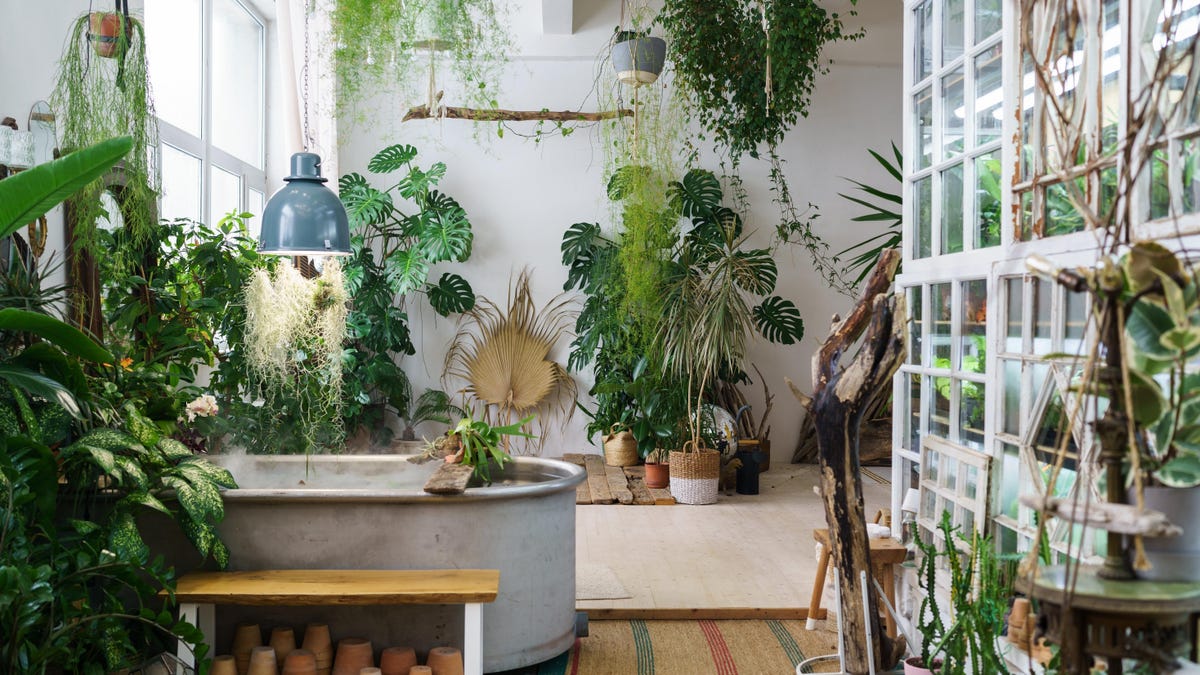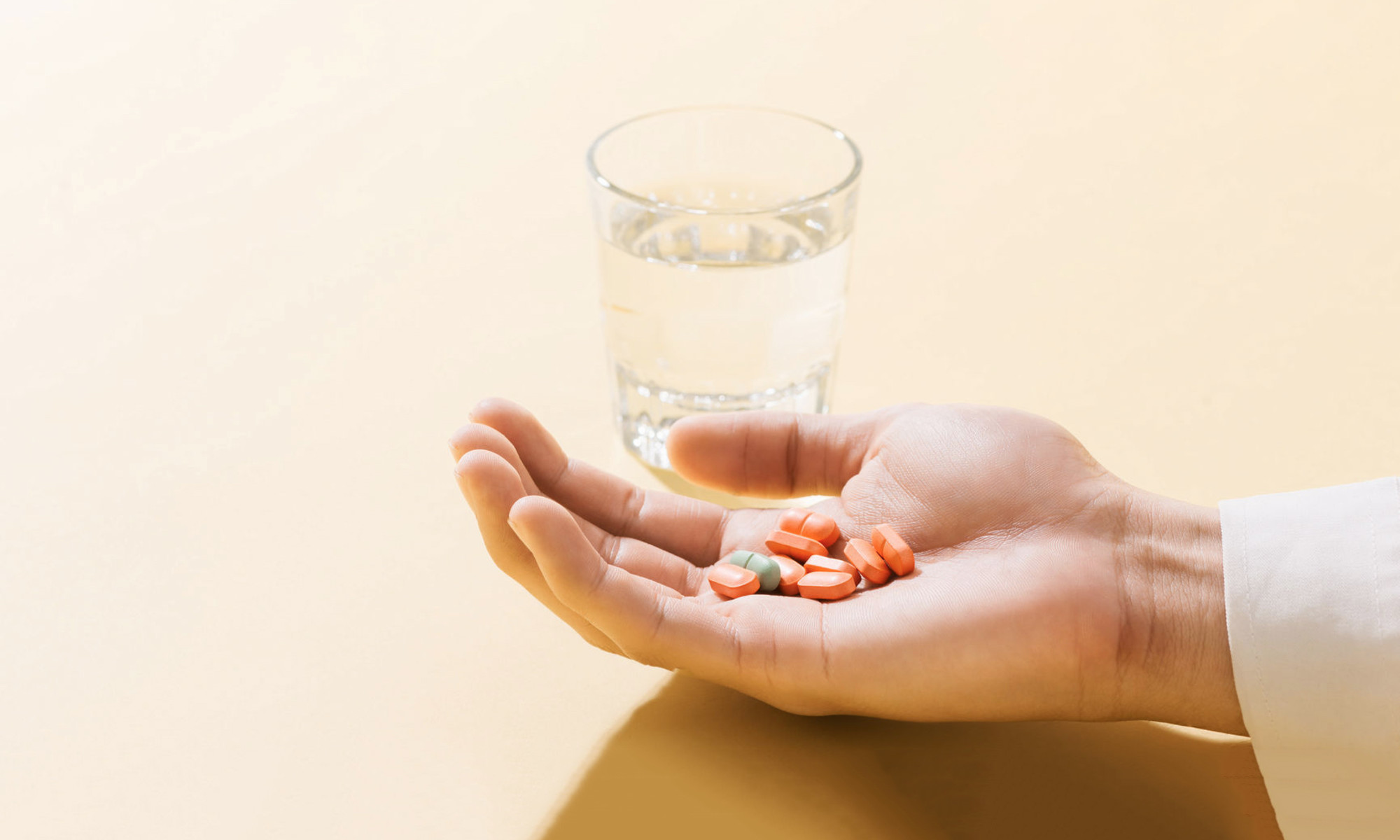13 Plants You Probably Shouldn’t Even Try to Grow Indoors
Indoor plants are a great way to brighten up your home, whatever climate you live in. As the world has increasingly shifted to a work-from-home model, having indoor plants has become even more popular—a 2021 survey found close to...


Photo: DimaBerlin (Shutterstock)
Indoor plants are a great way to brighten up your home, whatever climate you live in. As the world has increasingly shifted to a work-from-home model, having indoor plants has become even more popular—a 2021 survey found close to 90 percent of respondents kept at least one houseplant.
You might think that the only downside to littering your home with indoor plants is murdering them with your incompetence and neglect or losing lots of time and money in the effort to avoid murdering them with your incompetence and neglect. But there are other downsides—allergies, bug infestations, and even health risks. Just because a plant is beautiful and shows up on all those #platmom influencer accounts doesn’t mean it’s an ideal choice for you or your home. Here are the indoor plants you’re better off avoiding altogether, and why.
Ficus Benjamina

Photo: Shutterstock (Shutterstock)
Reasons to avoid: Allergies, poisonous, dust
Ficus plants are popular indoor plants, but they harbor dark secrets. One, they’re difficult to keep clean, because their waxy, broad leaves collect dust like it’s a new trend, requiring constant cleaning unless you want a reputation for being a bad plant parent. Two, they can trigger allergic reactions in folks with a latex sensitivity. And three, most ficus plants are poisonous to pets and humans, at least to some degree. The sap will irritate the skin, and if leaves or sap are ingested, it can lead to vomiting and diarrhea, or worse.
Succulents

Photo: Shutterstock (Shutterstock)
Reasons to avoid: Bugs!
Who doesn’t love succulents! These adorable plants make for ideal houseplants, unless you happen to bring home a succulent that’s playing host to a small colony of mealybugs. Because that small colony of mealybugs will turn into a hyper-advanced spacefaring civilization of mealybugs faster than you can imagine, especially if there are lots of other plants in your collection they can infest. While mealybugs aren’t dangerous (just kind of gross) they can be tough to get rid of, especially once they spread throughout your house.
Oleander

Photo: Shutterstock (Shutterstock)
Reasons to avoid: Poisonous
When you have a famous novel and film adaptation named after you because of your tendency to be poisonous, you know you’re a badass houseplant. While the oleander makes for a very beautiful houseplant, it’s also kind of dangerous—just having casual contact with oleander leaves or other parts of the shrub can be potentially fatal to both humans and pets. In other words, it’s simply not worth the risk to have these pretty flowers in your house.
Bonsai Trees

Photo: Shutterstock (Shutterstock)
Reasons to avoid: Some varieties cause a rash
The many varieties of bonsai tree are delightful, and w
e humans love anything that comes in mini form,
trees being
no exception. But there are many varieties of bonsai trees
that can cause allergic reactions, and handling some without
without protective gear can result in rashes—and can cause some serious toxic reactions if ingested. The danger extends to your pets—if you have a curious critter who might munch on your bonsai, this is a very poor choice for a houseplant even if you plan to be very careful when handling it.
(Of course, the idea that anyone has kept a bonsai tree alive for more than a week, considering the absurd amount of water they need, probably makes this slide moot. Or is that just me?)
Daisies

Photo: Shutterstock (Shutterstock)
Reasons to avoid: Allergies
Daisies are pretty and very easy to grow, sprouting large, bright flowers—and some of them are even edible, which means you can put them to good use. On the other hand, if you or anyone you know suffers from pollen-based allergies, daisies in general are a terrible idea because they are one of the biggest pollen producing flowers out there. Even if you’re not allergic, guests may have a miserable time visiting your home if daisies are present, so it’s best to avoid the issue altogether.
Devil’s ivy

Photo: Shutterstock (Shutterstock)
Reasons to avoid: Dangerous to pets
Also called the Pothos plant, it shouldn’t be too surprising that something named after the devil himself isn’t a good houseplant choice. People love the devil’s ivy because of its unique look and general lack of allergy-irritating pollen, but it’s also toxic to both humans and pets. While you may never have the urge to eat some of your devil’s ivy, your dogs and cats and other critters may not be as smart as you, and ingesting this plant can be quite dangerous. If you don’t have pets, you’re good to go; otherwise it’s best to choose something else to grow indoors.
Easter lily

Photo: Shutterstock (Shutterstock)
Reasons to avoid: They can kill your cats
Easter lilies are gorgeous, smell great, and are traditional decorative plants around the Easter holiday (and make for pretty plants at other times of the year as well). But if you are a cat person, beware: While lilies pose no real threat to you or to the dogs of the world, they’re extremely dangerous to cats, who often can’t resist a nibble when they encounter one. Cats are the only animal known to be affected by lilies, so if you don’t have a kitty prowling around you can have all the lilies you want.
English ivy

Photo: Shutterstock (Shutterstock)
Reasons to avoid: Poisonous, rash, dangerous to pets
English ivy is a popular choice because it will climb up just about anything, giving you a lot of creative freedom when curating your indoor garden. But despite the fact that it’s a wholly different plant from Poison Ivy, it can have a similar effect on you: A painful, itchy rash that can be very severe. Additionally, English ivy is dangerous to both cats and dogs, so not only will you be scratching yourself like crazy after potting this plant, your pets will also be in danger.
Philodendron

Photo: Shutterstock (Shutterstock)
Reasons to avoid: Poisonous
People love philodendron plants because they grow like weeds indoors, require very little maintenance, and are very attractive plants. Unfortunately, they’re packed with something called calcium oxalate, which makes just touching the plant a daredevil activity. Getting the sap on your skin or in your eyes (after handling the plant and rubbing them) can cause severe symptoms including swelling, difficulty breathing, rash, and even permanent damage to your eye. The only way to be safe around philodendrons is to have them in someone else’s house.
Elephant ears

Photo: Shutterstock (Shutterstock)
Reasons to avoid: Dangerous to pets
People love elephant ear (aka caladium) plants because of their large, attractive leaves. But keeping a caladium plant in your home is potentially dangerous to your pets because it contains calcium oxalate crystals that can cause severe burning pain, vomiting, and possibly worse if your doggo or cat eats some. It will also do those things to you if you eat some—and while that’s unlikely, you can irritate your skin or eyes if you touch the leaves and then yourself. Best to just skip this one unless you have a pet free home and you’re willing and able to take some precautions.
Hyacinth

Photo: Shutterstock (Shutterstock)
Reasons to avoid: Poisonous, allergies, dangerous to pets
Hyacinths are popular in the late winter and early spring because they bloom into colorful, attractive flowers while it’s still cold and dark outside. Unfortunately, hyacinths are dangerous to humans and pets. Aside from triggering your allergies, they’re also highly toxic to you and your dogs or cats. You need to wear gloves and other protective gear when handling hyacinths, or you risk a long list of unpleasant symptoms. And if your pet gets into the hyacinths they will require immediate emergency medical attention.
Dumb cane

Photo: Shutterstock (Shutterstock)
Reasons to avoid: Poisonous to people and pets
People like these big leafy plants because they’re relatively easy to care for and their leaves sport interesting gradations of color, going from pale yellow to lush green. But like philodendrons, dumb cane plants contain a toxic substance called calcium oxalate. That makes handling these plants dangerous without gloves and other protective clothing, because getting some of the sap on your hands, or—much worse—in your mouth or in your eyes will be a very unpleasant and dangerous experience. The threat extends to curious pets who might take an exploratory chew on a dumb cane plant—leading to a panicked trip to the veterinarian.
ZZ plant

Photo: Shutterstock (Shutterstock)
Reasons to avoid: Poisonous
ZZ plants are popular choices for indoor gardening because they tolerate neglect well and have few needs in terms of sunlight or watering. But that easiness comes with a price, because they’re also incredibly poisonous. Just touching them can cause painful rashes and other skin irritations, and ingesting even a small amount is a very bad idea. If small children or pets get curious about this plant, they can suffer serious injury, so think twice before including this one in your indoor gardening plans.

 AbJimroe
AbJimroe 































